Pork Dinuguan Recipe
Pork Dinuguan is a type of stew native to the Philippines. It is peculiar when compared to other types of stews because of the use of pork blood as the main ingredient. Before I move on, let me say that this is one of the dishes that I enjoy eating. It might seem different to…
This post may contain affiliate links. Please read our disclosure policy.
Pork Dinuguan is a type of stew native to the Philippines. It is peculiar when compared to other types of stews because of the use of pork blood as the main ingredient. Before I move on, let me say that this is one of the dishes that I enjoy eating. It might seem different to those who are not familiar with it yet, but your impression can change in a good way after trying it.
This easy dinuguan recipe is intended for beginner and intermediate cooks. I will introduce the basic ingredients that you can use to be able to cook a great tasting dinuguan at home. Note that I only use pork in this recipe, there were no innards involved. There is another recipe post for dinuguan with innards, but it has been sitting there for a while. I think that my dinuguang lamang loob video needs an update. Expect a new video on it soon.
How to Cook Pork Dinuguan
Cooking pork dinuguan is easy and simple. I think that you need to first know where to source pork blood in order to proceed with the cooking process.
I tend to be an early riser when I plan to cook dinuguan when I was still in the Philippines. I spent most of my life in Las Pinas City. Back then I remember waking up at 4:30 am the latest so that I can go to the nearest wet market to purchase the ingredients for dinuguan. There is a huge demand for pork blood during the weekend. You have to be early in order to be able to get fresh pork blood. The butcher will even give it to you for free provided that you purchased meat from their stall.
The scene was different when we moved to the US. It came out frozen in a 10-ounce tub. The good thing is available as long as the store is open. You do not need to wake-up early. It is not free though and it is mostly available on Filipino stores. I got a tub of frozen pork blood for this recipe. The first thing to do, in my case, is to thaw the blood.
Start cooking dinuguan by sautéing onion and garlic. I love to use more onions because it helps improve the taste of the dish. It is best to mince the onions and cook it until it becomes soft to the point that it is starting to caramelize.
The next step is to brown the pork. Pork shoulder is the usual cut that I use. You may also utilize pork belly for this recipe. I make sure to give enough time when browning the pork. Try to saute as if you are stir-frying. It is good to cook the pork completely at this stage. Don’t rush, take your time.
The next stage is where the pork gets tenderized. Pour water into the pot and add bay leaves and vinegar. Let the liquid boil. I also add a piece of Knorr Pork Broth to emphasize the taste of pork in my dinuguan. This product works well for me. Maybe it can do the same for you. Now, sit back and relax while the pork is being tenderized.
Add long green peppers or siling pansigang afterwards. The next thing to do is to pour the blood into the pot. Always remember to continue stirring afterwards to prevent the blood from forming. It will also be great if you cook the blood for 15 minutes or longer, just so you are sure enough that it is completely cooked.
Now, season your pork dinuguan with sugar, salt, and ground black pepper. Enjoy it with rice or rice cake.
Try this Pork Dinuguan Recipe. Let me know what you think.
Did you make this? If you snap a photo, please be sure tag us on Instagram at @panlasangpinoy or hashtag #panlasangpinoy so we can see your creations!
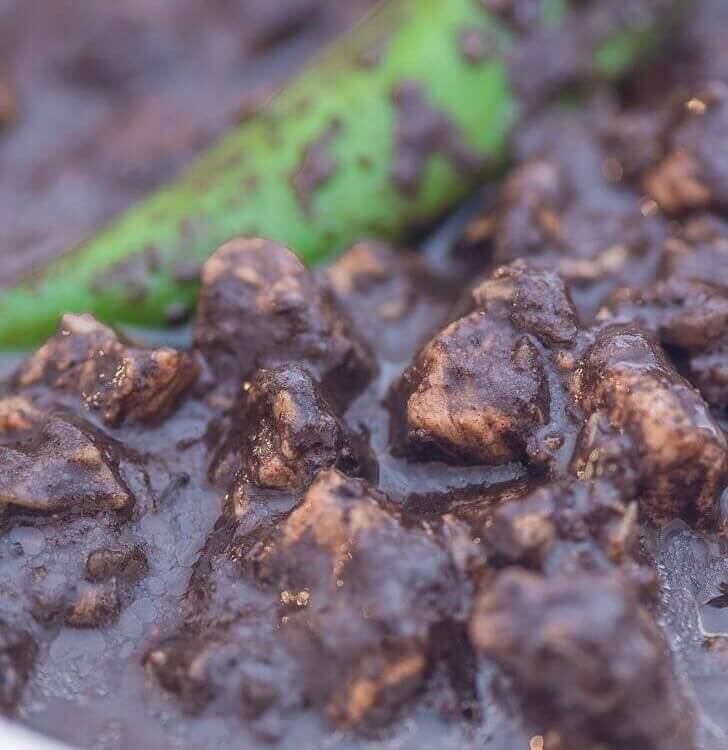
Pork Dinuguan Recipe
Ingredients
- 2 lbs. pork shoulder cubed
- 1 1/4 cups pork blood
- 1 piece Knorr Pork Cube
- 4 pieces long peppers
- 2 pieces onion chopped
- 6 cloves garlic minced
- 2 cups water
- ¾ cup white vinegar
- 3 pieces dried bay leaves
- 3 tablespoons cooking oil
- 1 tablespoon granulated white sugar
- Salt and ground black pepper to taste
Instructions
- Heat oil in a cooking pot
- Saute onion for 30 seconds. Add garlic. Continue to cook until onion softens.
- Add pork. Saute for 3 to 5 minutes.
- Pour water. Let boil. Add bay leaves and vinegar. Let the liquid re-boil.
- Add Knorr Pork Cube. Stir. Cover and simmer for 1 hour. Note: add water as needed.
- Add long green peppers and pour pork blood into the pot. Stir. Continue to cook between low to medium heat for 15 minutes while stirring every 3 minutes.
- Add sugar and season with salt and ground black pepper.
- Transfer to a serving bowl. Enjoy.
Nutrition Information
Watch How to Cook Pork Dinuguan
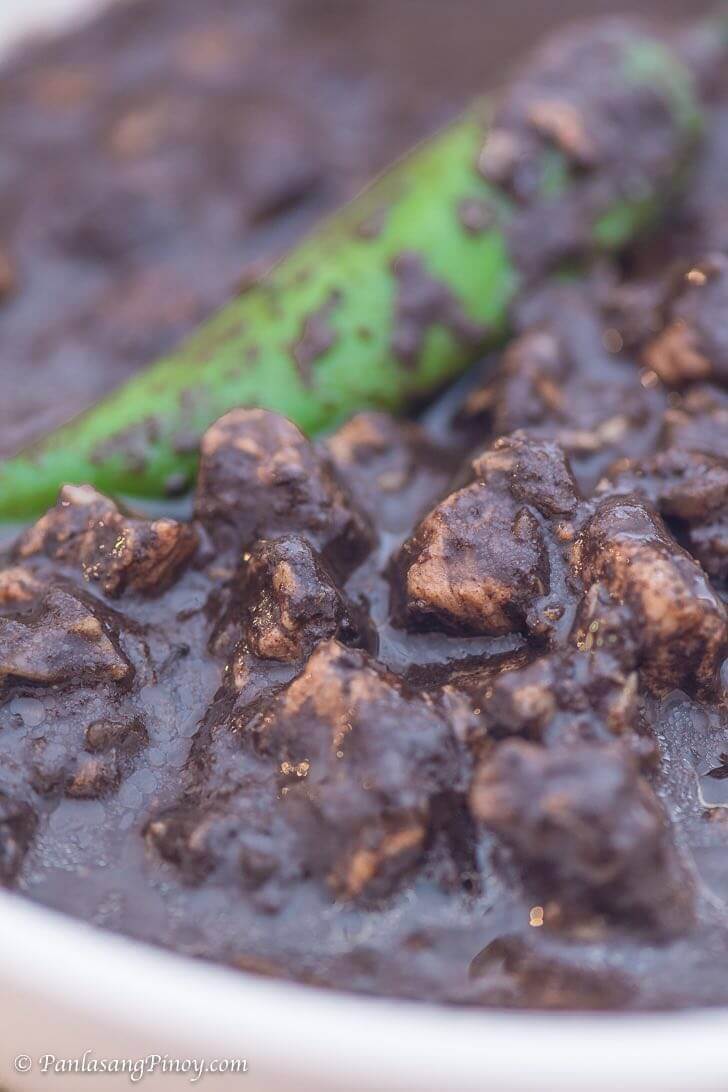
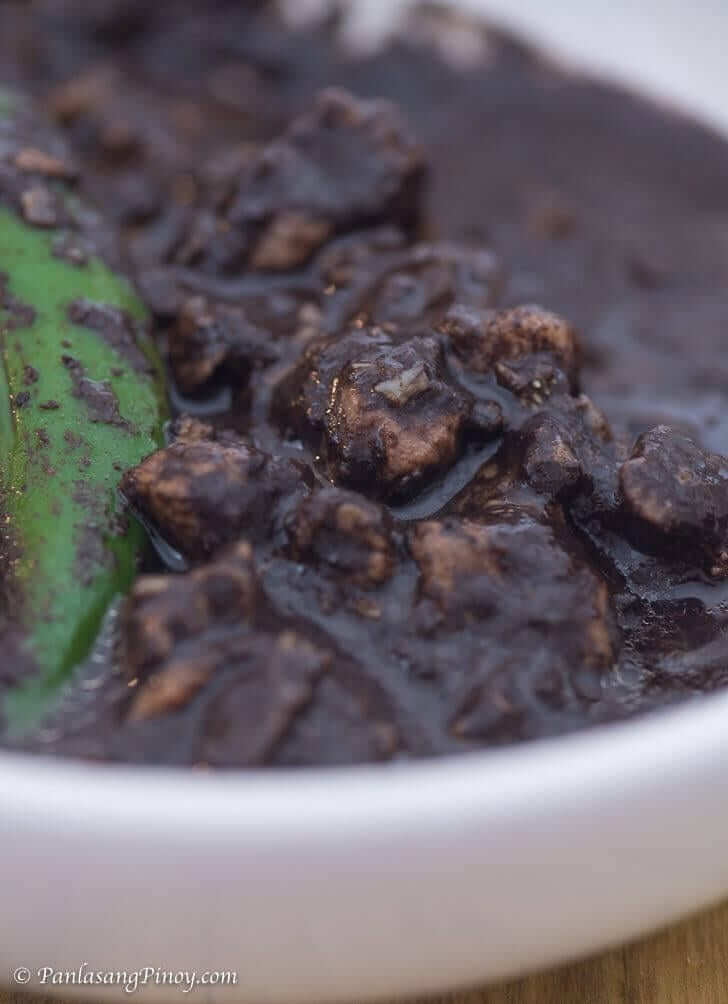
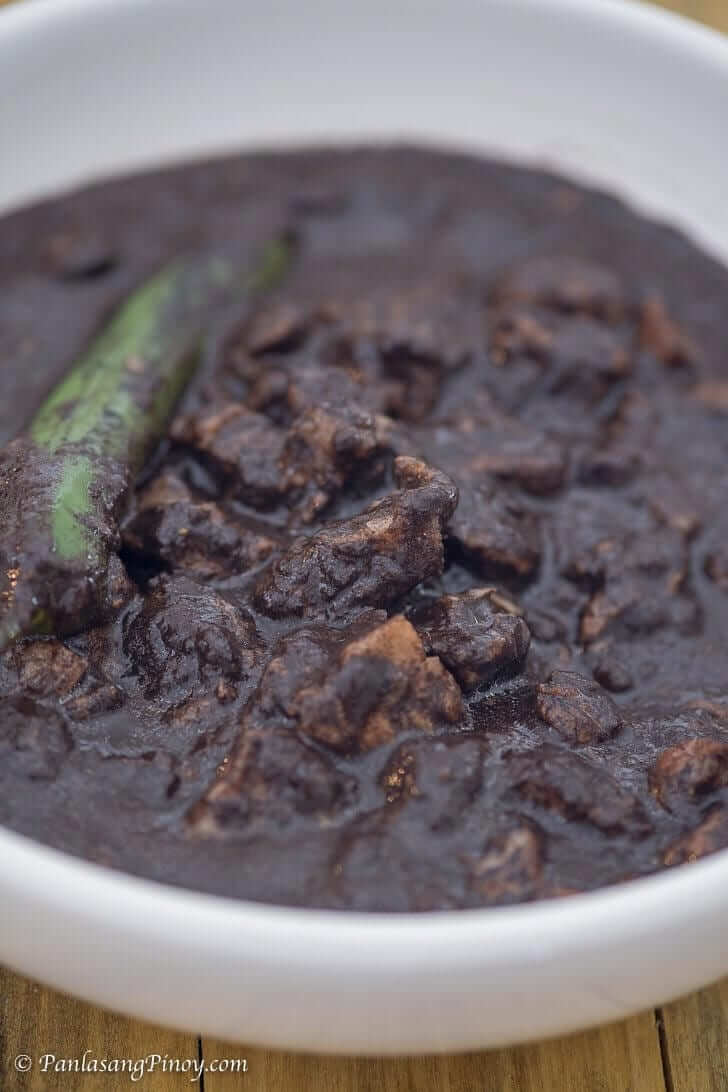
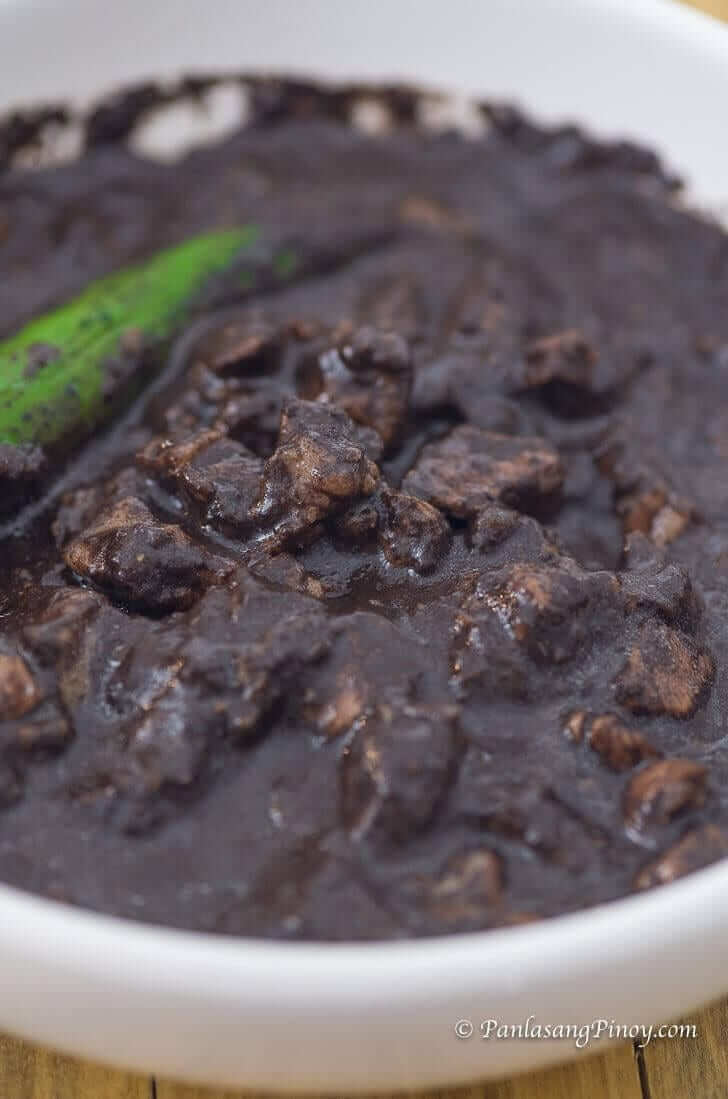

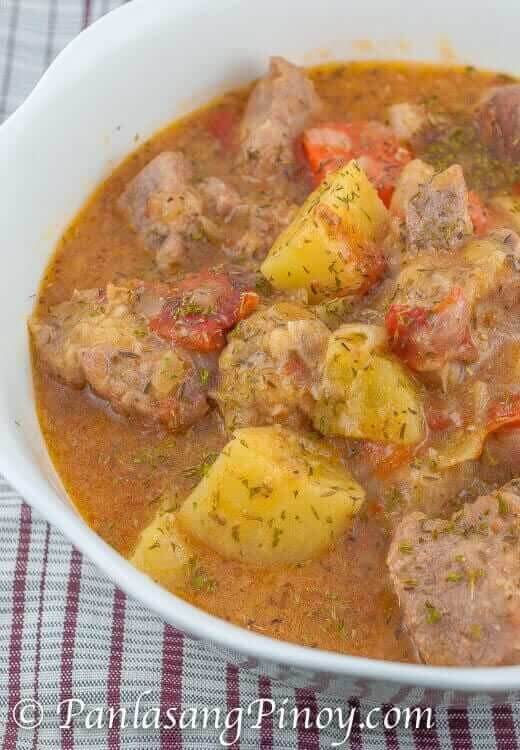
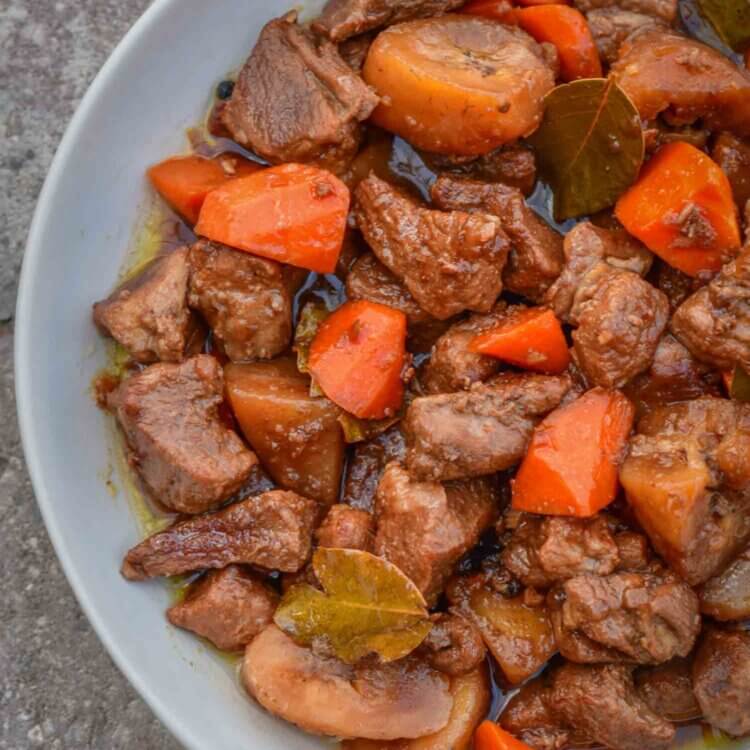
Lizzie says
Thank you so much for this recipe! My family is from the Torres Strait and I grew up eating dinuguan at my grandparents house.
Vanjo Merano says
Lizzie, I hear you. Do you also like it with steamed puto?